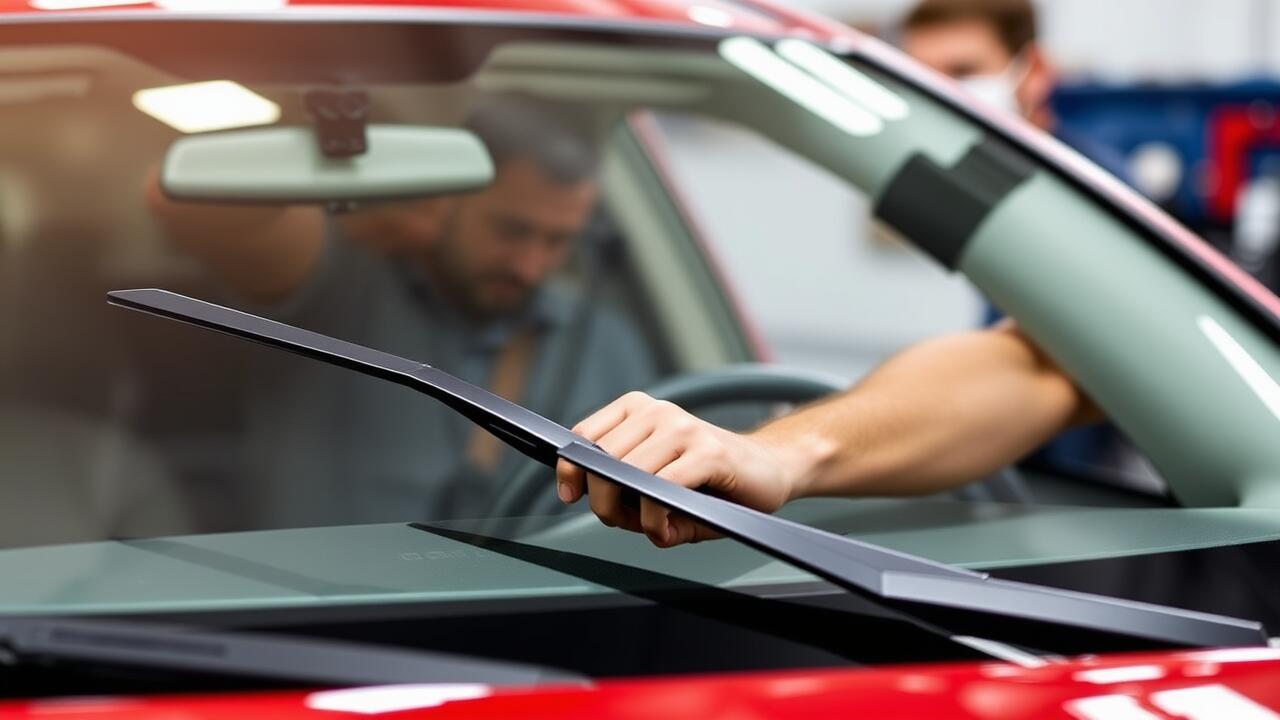
Table Of Contents
Installing the New Back Windshield Wiper
Installing a new back windshield wiper can be a straightforward task. Begin by selecting a wiper blade that matches the specifications of your vehicle. Commonly, these blades are sold in various sizes, so consulting your owner’s manual or a reliable parts resource will help ensure you choose the correct one. Once you have the right blade, lift the wiper arm away from the rear window, providing enough space to remove the old wiper.
To replace the wiper, identify the release mechanism on the blade. Press or lift this mechanism, depending on your specific model, to detach the old wiper. Align the new blade with the connector and press until you hear a click, indicating a secure fit. Gently lower the wiper arm back onto the rear window. A proper installation is essential for optimal performance and visibility during inclement weather, making it a critical step in the rear window replacement process.
Best Practices for Proper Installation
When performing a rear window replacement, it is essential to gather all necessary tools and components before starting the installation process. Make sure to have a proper replacement wiper blade designed specifically for your vehicle’s make and model. Read through the manufacturer’s instructions carefully. This ensures a smooth installation and can help prevent mistakes, such as using incorrect fittings or adapters.
Prior to attaching the new wiper blade, ensure the pivot arm is clean and free of debris. Align the wiper blade with the arm at the correct angle to promote effective wiping. Press down firmly until you hear a click, which indicates that the blade is securely attached. After installation, check that the wiper is correctly positioned along the rear window for optimal visibility and performance.
Testing Your New Back Windshield Wiper
After installing your new back windshield wiper, it is crucial to test its functionality to ensure proper operation. Start by activating the rear wiper from your vehicle's controls. Observe the wiper’s movement across the rear window and listen for any unusual noises that may indicate improper installation or a faulty wiper. Check for an even sweep across the glass to confirm that it clears water or debris effectively.
During the testing phase, also verify that the wiper arm returns to its resting position when turned off. Pay attention to how quickly it reacts and whether any streaks or missed spots occur on the rear window. Any issues encountered may require an adjustment or further inspection of the rear window replacement to confirm everything has been set up correctly. Regular testing after installation will help you catch any potential problems early.
How to Ensure Optimal Performance
To ensure optimal performance of your rear windshield wiper, regular maintenance is crucial. Check the wiper arm to ensure it is properly adjusted and securely fastened. Inspect the wiper blade for any signs of wear and tear, such as cracking or fraying. Keeping the rear window clean also helps improve visibility and allows the wiper to function more effectively.
Additionally, using the appropriate washer fluid can significantly enhance the performance of your rear wiper. If the fluid is dirty or diluted, it will not clean the rear window properly. In some cases, a rear window replacement may be necessary if the glass is damaged, as this can also impact the wiper's effectiveness. Regularly assessing both the wiper mechanism and the visibility of the rear window will help maintain safety and efficiency while driving.
Maintenance Tips for Back Windshield Wipers
To ensure the longevity of your back windshield wipers, regular cleaning is essential. Dirt and debris can accumulate on the wiper blades, leading to decreased efficiency and potential scratching of the glass. Use a microfiber cloth and a suitable glass cleaner to wipe down the blades and rear window regularly. This simple maintenance task can enhance visibility and prevent damage during inclement weather.
In addition to cleaning, consider the environmental factors affecting your vehicle. Extreme temperatures, both hot and cold, can wear out the rubber of the wiper blades more quickly. If you notice any signs of wear, such as cracks or splitting, it may be time for a Rear Window Replacement. Keeping track of the age and condition of your wipers will help maintain optimal performance and avoid unexpected replacements.
Prolonging the Life of Your Wipers
To prolong the life of your wipers, regular maintenance is essential. This includes cleaning the wiper blades frequently to remove dirt, grime, and other debris that can cause wear and tear. Keeping the rear window clean also helps enhance visibility and reduces the need for excessive wiping. When the blades are clean, they can make better contact with the glass, leading to more efficient performance.
Another important aspect is to inspect the wipers for any signs of wear or damage. If you notice any splitting or stiffening of the blades, consider replacing them promptly. Over time, exposure to UV rays and extreme temperatures can degrade the rubber material. Investing in high-quality wiper blades can make a difference in longevity. If you find that your rear wiper is beyond the point of repair, a rear window replacement may be the necessary step to ensure your vehicle remains safe and functional.
FAQS
Can I replace my back windshield wiper myself?
Yes, you can replace your back windshield wiper yourself. It is a relatively simple task that typically requires no special tools, and you can follow the manufacturer's guidelines for installation.
How do I know what size wiper blade to purchase for my back windshield?
You can find the correct size for your back windshield wiper by checking the vehicle's owner manual, looking it up online at a wiper blade retailer, or measuring the existing wiper blade.
What are the best practices for installing a new back windshield wiper?
Best practices for installing a new back windshield wiper include ensuring that the vehicle is turned off, following the instructions provided with the wiper blade, and making sure the wiper is securely attached before testing it.
How often should I replace my back windshield wiper?
It’s generally recommended to replace your back windshield wiper every 6 to 12 months, or sooner if you notice streaking, skipping, or reduced visibility while using it.
What maintenance tips can help prolong the life of my back windshield wipers?
To prolong the life of your back windshield wipers, regularly clean the blades and windshield, avoid using them on dry glass, and store your vehicle in a garage or shaded area to protect the wipers from extreme weather conditions.





























